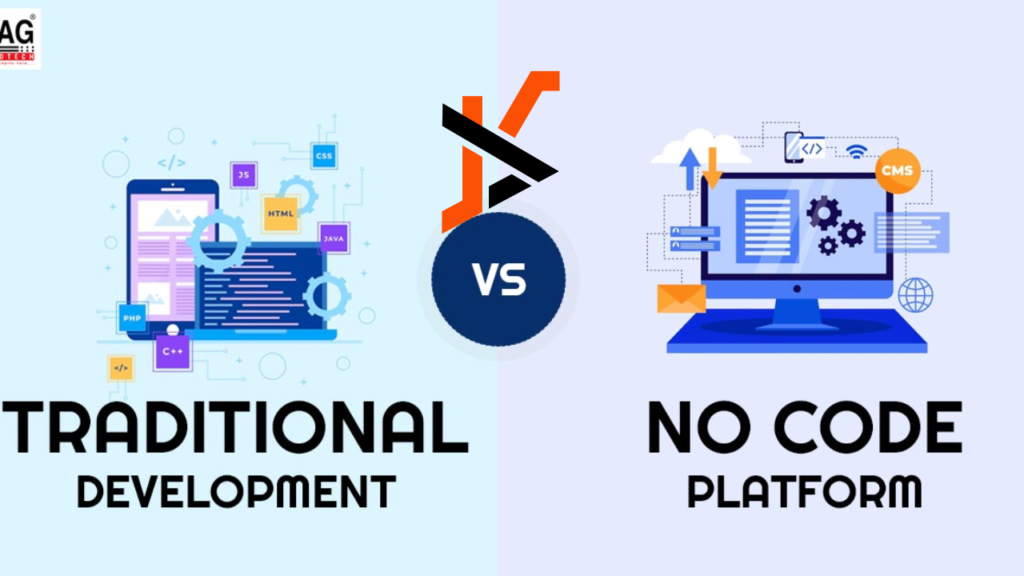When you start a new project, you need to decide how you’re going to build it. Do you take the conventional route with traditional development, writing lines of code to craft custom solutions?
Or do you opt for no-code development, using intuitive platforms that let you build applications visually? This decision will shape your project’s progress, functionality, and long-term sustainability.
Understanding Traditional Development
If you choose traditional development, you’re committing to custom coding. This means working with programming languages like Python, JavaScript, or C++ to construct the entire system from the ground up.
System software relies heavily on this method because it demands control, flexibility, and performance optimization. Developers using traditional coding can build applications precisely to specification, ensuring the highest level of customization and adaptability.
Traditional development requires expertise, whether you hire developers or learn to code yourself. It also takes time. Writing, debugging, and refining code is an ongoing process that can stretch project timelines.
However, coding from scratch could be the best choice if your project involves highly specialized functionality or deep integrations.
The Rise of No-Code Development
You don’t have to be a programmer to build software anymore. No-code development allows non-technical users to create applications without writing a single line of code.
These platforms simplify the development process by using drag-and-drop interfaces, pre-built modules, and automated workflows.
Business owners, product managers, and entrepreneurs can bring ideas to life without hiring a development team. This approach can be handy for launching prototypes, testing ideas quickly, and saving money on development costs.
Comparing Costs and Time Investment
Budget and time constraints play a crucial role in your choice. If you go with traditional development, expect to allocate significant resources. Depending on complexity, developers are expensive, and software engineering takes months or even years.
The result is a fully custom solution, but that comes at a cost.
On the other hand, no-code platforms drastically reduce costs and development time. You can build functional applications in days or weeks instead of months. Monthly subscription fees for no-code tools are significantly lower than the cost of hiring developers, making it an attractive option for startups and small businesses.
However, no-code solutions can introduce limitations. You may hit a wall if your application needs extensive backend logic, advanced integrations, or unique algorithms. Some projects start with no-code and later transition to traditional development as their needs grow.
Flexibility and Customization
A fully coded system gives you unlimited possibilities. You dictate your application’s behavior, design, and performance. Custom-built system software benefits from this flexibility, allowing engineers to optimize every function. With traditional development, there are no platform-imposed restrictions.
No-code tools, while flexible within their boundaries, have constraints. You’re limited by what the platform offers, and if you need an integration that isn’t supported, you might be stuck.
Some no-code platforms allow custom scripting, but you’re venturing into low-code territory at that point, which still requires programming knowledge.
Long-Term Maintenance and Scalability
The future of your project should influence your decision. A fully coded solution requires ongoing maintenance—bug fixes, security updates, and feature expansions. This won’t be an issue if you have an in-house team or budget for long-term support.
No-code platforms handle maintenance for you. The platform provider takes care of updates, security patches, and hosting. However, scalability can become a problem. As your project grows, you might need features or infrastructure that the no-code platform cannot support. At that point, you might have to rebuild your application with traditional coding.
Conclusion: Which One Should You Choose?
Your choice between no-code development and traditional coding depends on your needs. If you need full control, scalability, and custom functionality, coding from scratch is the way to go.
But if speed, cost savings, and ease of use matter most, no-code tools offer a strong alternative. Consider your project’s complexity, budget, and long-term goals before deciding. Either way, choosing the method that aligns with your vision and resources is key.

